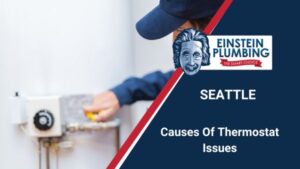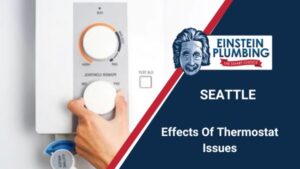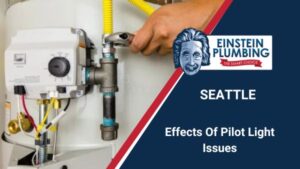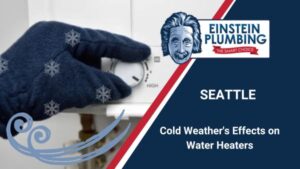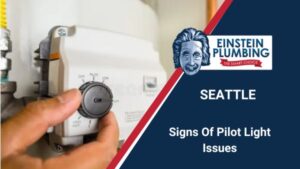Tankless water heaters have gained popularity in recent years due to their energy efficiency, ease of use, and on-demand hot water supply. However, like all appliances, they require regular maintenance to ensure optimal performance and an extended lifespan. In this blog post, we will discuss tips on tankless water heater maintenance for your Bend residence.
Inspection and Cleaning
Check the Water Filter
Regularly scrutinize the water filter within your tankless water heater for any sediment or mineral buildup.
- Locate the Water Filter: The water filter in a water heater is generally positioned where the cold water supply enters the unit. It could be found near the inlet valve or within the unit itself. Consult the user manual or manufacturer’s instructions to precisely locate it.
- Turn Off the Water Supply: Before inspecting the water filter, ensure the water supply to the heater is turned off. This prevents water flow during the examination.
- Remove the Water Filter: Carefully remove the water filter from its housing or location. Follow the instructions provided by the manufacturer to avoid causing any damage.
- Examine the Filter for Debris: Once the filter is removed, visually inspect it for any sediment, debris, or mineral buildup. Check for discoloration or any visible blockages that might hinder water flow.
- Clean the Filter (If Needed): If you notice any buildup or debris on the filter, clean it thoroughly. Use a soft brush or gently rinse it under running water to remove the accumulated sediment. Avoid using harsh cleaning agents that could damage the filter.
- Reinstall the Filter: Once the filter is cleaned or if no issues are detected, carefully place it back into its housing or original location. Ensure it is properly secured to prevent leaks.
- Turn the Water Supply Back On: Once the filter is reinstalled, turn the water supply back on and check for any leaks or irregularities. Verify that the water flows smoothly through the filter.
- Leak detection: Carefully inspect all connections and fittings for signs of leaks. Addressing leaks promptly is crucial to prevent water wastage and potential structural damage.
Flushing for System Cleanliness
Mineral deposits tend to accumulate over time, particularly in regions with hard water, potentially diminishing efficiency.
- Prepare for Flushing: Before starting the flushing process, turn off the power to the tankless water heater and shut off the water supply to the unit. This ensures safety and prevents water flow during the maintenance.
- Locate the Filter: The filter is typically positioned along the water inlet line or within the tankless water heater system. Refer to the user manual or manufacturer’s instructions to precisely locate it.
- Prepare Flushing Solution (if applicable): Some water heaters might require a descaling or flushing solution. Prepare the recommended solution as per the manufacturer’s guidelines. This might involve using vinegar or a proprietary descaling agent.
- Connect a Hose (if necessary): In some cases, the flushing process might involve connecting a hose to the drain valve of the water heater. This facilitates the removal of sediment and debris.
- Drain the Tank: Open the drain valve and allow the water to drain from the tank. Be cautious as the water might be hot. This step helps remove any sediment or mineral buildup present in the tankless water heater.
- Flush with Solution (if applicable): If a descaling solution is recommended, introduce it into the water heater system through the inlet or as per the manufacturer’s instructions. Allow the solution to circulate for the specified duration.
- Rinse the System: After the recommended flushing time, thoroughly rinse the system. This is typically done by refilling the tank with clean water and letting it drain through the open valve to remove any remaining solution or debris.
- Close the Drain Valve: Once the tank has been thoroughly flushed and rinsed, close the drain valve and ensure it’s tightly sealed.
- Turn on the Water Supply: Turn the water supply back on and let the tank refill. Check for any leaks or irregularities.
- Restore Power to the Tankless Water Heater: Turn the power back on to the water heater to resume normal operations.
Venting System Maintenance
Vent Inspection Protocol
Regularly assess the venting system for obstructions or blockages. A clear pathway is essential for safe and efficient operation.
- Routine Inspections: Conduct periodic checks of the venting system to ensure it’s free from obstructions or blockages. Inspect both the interior and exterior components, including the vent pipes and the area surrounding them. Look for signs of debris, bird nests, or any other potential obstructions that could impede proper ventilation.
- Safety Measures: Proper venting is vital for the safe operation of your tankless water heater. Regularly check for signs of corrosion or damage along the venting system, as these issues could compromise the unit’s safety and efficiency.
- Professional Inspection: Consider engaging a professional technician to conduct a comprehensive inspection of the venting system at least once a year. A professional can perform more detailed checks, such as examining the flue pipes and exhaust outlets, to guarantee their integrity and safety.
- Adhere to Manufacturer Recommendations: Always follow the manufacturer’s guidelines for venting system maintenance. This includes regular inspections and cleanings, as well as adhering to specific safety and maintenance procedures recommended for your tankless water heater model.
- Carbon Monoxide Detection: Install carbon monoxide detectors in your home, especially near the tankless water heater and other fuel-burning appliances. Regularly check and replace batteries in these detectors to ensure they’re functioning effectively, providing an early warning of any potential venting issues.
- Proper Vent Size: Verify that the vent size matches the specifications outlined by the manufacturer. An improperly sized vent can lead to inadequate airflow, affecting the heater’s performance and potentially posing safety risks.
Unobstructed Venting Pathways
- Clearing Obstructions: Clear any obstructions or debris that may hinder the vent’s functionality. Remove accumulated debris, such as leaves, nests, or dirt, from the exterior vents. Inside the home, ensure there are no blockages within the vent pipes, which could restrict the flow of exhaust gas.
- Maintain Venting Pathways: It’s essential to keep the area surrounding the vents clear of any potential obstructions, including overhanging branches, shrubbery, or structures. This helps prevent blockages that could impede proper airflow.
- Weather Considerations: In regions with extreme weather conditions, such as heavy snowfall or ice accumulation, take proactive measures to safeguard the vents. Install protective covers or shields to prevent blockages or damage caused by inclement weather.
- Educate Household Members: Inform household members about the importance of maintaining clear venting pathways and safety protocols. Encourage everyone to be mindful of the area surrounding the vents to prevent accidental blockages.
Assess Temperature and Pressure Relief Valve
Understand the pivotal role the TPR valve plays in maintaining safety. It serves as a safeguard against excessive pressure and temperature within the tankless water heater, preventing potential catastrophic outcomes such as tank explosions or other serious hazards.
Regular valve testing
- Annual Testing: Regularly test the TPR valve at least once a year to ensure it’s in proper working condition. This involves carefully lifting and releasing the valve’s lever to allow a small amount of water to discharge. Be cautious during this process as the water may be hot.
- Professional Assessment: If you’re uncertain about the condition or operation of the TPR valve, engage a professional plumber or technician in Bend, Oregon. They can conduct a more thorough assessment of the valve and its role in the overall safety of the tankless water heater.
- Pressure Testing: Alongside testing the TPR valve, consider conducting a pressure test on the water heater to ensure it’s operating within safe parameters. Excessive pressure can be detrimental to the unit’s integrity and safety.
- Clear Discharge Pathway: Ensure that the discharge pipe connected to the TPR valve is unobstructed and directed towards a suitable drain to prevent any water release from causing damage or hazards.
- Documentation of Tests: Maintain records of annual tests, inspections, and any maintenance related to the TPR valve. This documentation serves as evidence of proper maintenance and can be crucial in the event of any warranty claims or safety concerns.
Replacement requirements
- Replacement Recommendations: Follow the manufacturer’s guidelines regarding the replacement schedule of the TPR valve. In some instances, manufacturers recommend replacing the valve every few years, even if it appears to be functioning correctly, to ensure continued safety.
- Signs of Wear or Corrosion: During the annual test or periodic checks, inspect the TPR valve for signs of wear, corrosion, or any visible damage. If you notice corrosion or significant wear, or if the valve fails the test, it’s imperative to replace it promptly.
- Correct Valve Size and Type: Ensure that the replacement TPR valve matches the specifications provided by the water heater manufacturer. Using an incorrect valve can compromise safety and the proper functioning of the tankless water heater.

Electrical components check
Assessing the power supply of your tankless water heater involves a thorough examination of all its electrical components to ensure safety and proper functionality.
Power supply assessment
- Visual Inspection: Start by turning off the power to the tankless water heater and visually examining all electrical components. Check for any signs of wear, damage, or discoloration, especially on wires, connections, and electrical panels. Look for any loose or corroded parts that might indicate potential issues.
- Check for Overheating: Feel the electrical components for excessive heat. Overheating can indicate an electrical problem. If you notice any hotspots or components that are warmer than usual, this could signal a potential issue that needs attention.
- Consider Voltage Fluctuations: Voltage spikes or irregularities in the electrical supply can impact the tankless water heater’s components. Consider installing a surge protector or voltage regulator to safeguard the unit from voltage fluctuations and power surges.
- Regular Maintenance Schedule: Incorporate the power supply assessment as part of your routine maintenance schedule. Regular checks of the electrical components can help identify potential issues early, preventing larger problems down the line.
- Professional Inspection: Periodically engage a certified electrician or technician to conduct a comprehensive inspection of the water heater’s electrical system. Professionals can perform in-depth evaluations and address any potential electrical concerns or hazards.
- Documenting Maintenance: Keep a record of any maintenance performed on the water heater’s electrical components. Documenting these assessments can help track the unit’s history and aid in diagnosing potential issues in the future.
Check the wirings
- Tighten Connections: Secure any loose wiring or connections. Loose wires can lead to electrical malfunctions and safety hazards. Use appropriate tools to tighten connections carefully, ensuring they are snug but not over-tightened.
- Inspect for Corrosion: Look for any signs of corrosion, especially on terminals and connection points. Corrosion can impede electrical conductivity and compromise the overall performance of the water heater. Clean or replace any corroded parts as necessary.
- Evaluate Grounding: Confirm the proper grounding of the tankless water heater. A solid grounding connection is essential for electrical safety. Ensure that the grounding wire is securely attached and in good condition. In case of doubts about the grounding, consult a professional electrician.
- Safety Precautions: Prior to conducting any assessment or maintenance, ensure you have the necessary knowledge and tools. If you are uncertain about electrical components or encounter issues beyond a visual inspection, seek professional assistance to avoid risks of electrical shock or damage.
Water quality considerations
Utilizing Water Softening Systems
Areas with hard water benefit from water softeners, reducing mineral deposits within the tankless water heater. This results in decreased scaling, extending the unit’s lifespan and sustaining its efficiency.
- Water Softening Systems: Consider installing a water softening system if your area has hard water. These systems reduce the mineral content in the water, curbing the formation of scale within the water heater. Softened water diminishes mineral buildup and prolongs the heater’s efficiency and longevity.
- Routine Maintenance with Hard Water: In regions with hard water, increase the frequency of maintenance, such as flushing the system, to mitigate scaling issues. This proactive approach helps manage mineral accumulation and maintains the heater’s performance.
- pH Levels and Corrosion: Regularly monitor the pH levels of your water supply. Extremely high or low pH levels can lead to corrosion within the tankless water heater and the plumbing system. Using appropriate treatments to balance the water’s pH safeguards the unit against damage and extends its lifespan.
- Water Filtration Systems: Consider installing additional water filtration systems to further improve water quality. These systems remove impurities and particles, reducing the chances of sediment buildup in the heater.
Water quality
- Water Quality Testing: Periodically test the quality of your water.Understanding the water’s mineral content and pH levels aids in implementing the right maintenance measures for your specific water quality.
- Treatment Options: Explore various treatment options suitable for your water quality in your tankless water heater. These might include reverse osmosis systems, water softeners, or specific filters designed to address the issues prevalent in your water supply.
- Professional Consultation: If unsure about the best course of action for your water quality, seek guidance from water treatment professionals. They can provide insights into the most suitable systems or treatments based on your water quality test results.
- Filter Maintenance: In areas prone to sediment or impurities, maintain any water filters or purification systems regularly. Follow the manufacturer’s guidelines to ensure these systems operate effectively and consistently improve water quality.
Schedule a professional tankless water heater maintenance service
While certain maintenance tasks can be managed individually, scheduling professional inspections at least once a year is advisable.
Maintenance Arrangements
- Expertise and Experience: Professional technicians from Einstein Plumbing have the expertise and experience to thoroughly inspect, clean, and service tankless water heaters. Their specialized knowledge ensures that every component is assessed effectively, addressing potential issues that might go unnoticed during DIY maintenance.
- Comprehensive Checks: Professionals conduct comprehensive checks, ensuring all components, from the heating elements to the electrical and plumbing connections, are in optimal condition. Their thorough assessment helps prevent potential malfunctions and safety hazards.
Warranty Compliance Assurance
- Manufacturer Compliance: Regular professional maintenance often aligns with the manufacturer’s recommendations. This adherence ensures that the water heater remains within the warranty terms, safeguarding against potential warranty voidance due to inadequate maintenance.
- Safety Assurance: Trained professionals can detect safety concerns that might not be apparent to the average homeowner. This includes identifying potential gas leaks, issues with venting systems, or electrical hazards, ensuring the unit operates safely.
- Recordkeeping and Recommendations: Professional technicians maintain records of maintenance, providing a documented history of service. They offer recommendations for improvements or necessary repairs, guiding you on the best course of action for your water heater’s optimal performance.
In conclusion
Maintaining a tankless water heater is fundamental for its efficiency, longevity, and safety. Adhering to this comprehensive maintenance guide and conducting regular checks and cleanings ensures a continuous hot water supply while mitigating the risk of malfunctions. Regular professional tankless water heater maintenance from Einstein Plumbing not only saves on repair costs but also ensures a reliable hot water source for your Bend, Oregon household, solidifying its significance as a home investment. Prioritizing the care of your tankless water heater today promises sustained benefits in the long run.



